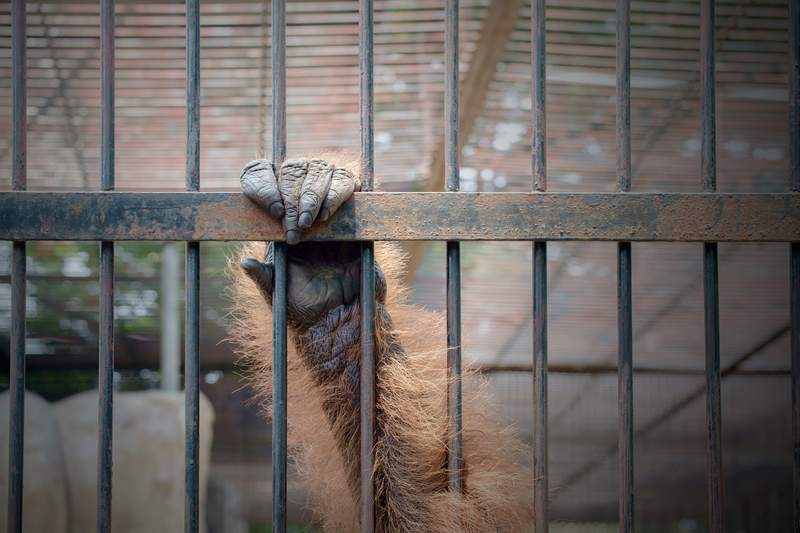Exploring the Harmony of Decluttering and Minimalist Living
Minimalist living and decluttering are two concepts that have taken center stage in modern lifestyles. In a world inundated by material possessions, digital distractions, and emotional baggage, embracing the harmony between decluttering and minimalist living offers a pathway to clarity, joy, and enhanced quality of life. This comprehensive guide delves into their symbiotic relationship, practical techniques, and the countless benefits that await those willing to explore this transformative journey.
What is Minimalist Living?
Minimalist living is a lifestyle philosophy that emphasizes intentionality, simplicity, and purpose in all areas of life. Instead of focusing on what we have, minimalism highlights what truly matters and enables us to remove the excess that distracts us from joy and fulfillment.
- Intentional Consumption: Owning and purchasing only what you truly need and love.
- Simplified Living Spaces: Less clutter and fewer possessions lead to clearer, airier homes.
- Mental Clarity: Freeing your mind from distractions, fostering a peaceful mindset.
Minimalist living isn't about deprivation; rather, it's about making space for what brings value and letting go of everything else.

What is Decluttering?
Decluttering is the process of systematically removing unnecessary items from your living space, workspace, and even your digital life. While often viewed as a one-time activity, decluttering forms the essential foundation of minimalist lifestyle. It opens the doors to a life less burdened by the weight of possessions.
- Physical Decluttering: Clearing out cabinets, closets, and workspaces.
- Digital Decluttering: Organizing files, deleting obsolete emails, managing digital subscriptions.
- Emotional Decluttering: Untangling oneself from emotional attachments to things and habits.
Through decluttering, you pave the way for intentional and minimalist living, creating a harmonious environment that's easier to maintain and enjoy.
The Symbiotic Relationship: Decluttering and Minimalism
At a glance, decluttering and minimalist living might seem interchangeable. However, they represent two distinct yet interconnected journeys:
- Decluttering is the action: physically or mentally removing excess.
- Minimalist living is the philosophy: adopting a mindset and values that prevent future clutter from accruing.
Harmonizing decluttering and minimalist living means establishing both the means and the motive for a streamlined life. Decluttering is the first step. Once your physical and mental spaces are clear, minimalist philosophy ensures you continue living mindfully, only inviting valuable things and experiences into your life.
Why Pair Decluttering With Minimalism?
- Lasting Results: Minimalism helps you maintain a decluttered space long-term.
- Intentional Living: Combining the two encourages you to make conscious decisions in all aspects.
- Emotional Liberation: Releasing physical possessions often leads to reduced anxiety and increased contentment.
The Benefits of Embracing a Decluttered Minimalist Lifestyle
Integrating decluttering and minimalism into your life unlocks profound, wide-ranging benefits. Some of the most impactful include:
1. Enhanced Mental Well-Being
Cluttered spaces often lead to stress, anxiety, and distraction. By simplifying your surroundings through minimalist decluttering, you create room for peace, stillness, and focus.
- Reduced Stress: A calm physical environment leads to inner calm.
- Improved Focus: Fewer distractions help you concentrate on meaningful tasks.
- More Restful Sleep: Clutter-free bedrooms provide the atmosphere needed for better sleep.
2. Financial Freedom
Minimalist living shifts your spending to the essentials. Decluttering often reveals unused items that can be sold or donated, adding financial and emotional value.
- Less Impulse Shopping: Clarity of purpose leads to smarter purchases.
- Extra Money: Selling excess possessions can supplement your income.
- Lower Maintenance Costs: Fewer belongings mean less to maintain, repair, or replace.
3. Sustainability and Environmental Impact
Minimalism and a decluttered lifestyle go hand in hand with eco-conscious living:
- Lower Consumption: You buy less, reducing waste and your carbon footprint.
- Responsible Disposal: Decluttering responsibly (recycling or donating) benefits communities and the planet.
- Sustainable Habits: Minimalism encourages durability over disposability.
4. Improved Relationships and More Time
Without the burden of managing clutter, you have more time and energy for family, friends, and personal passions. Shared spaces become less contentious and more conducive to harmony when everyone is involved in creating a minimalist, clutter-free home.
Decluttering Strategies for a Minimalist Life
Embarking on the journey from decluttering to minimalist living doesn't have to be overwhelming. Here are time-tested strategies to help you succeed:
1. Start Small and Focused
Instead of decluttering your entire house in one go, choose a single area--like a drawer or a countertop. Experience the immediate reward, and gradually build momentum.
2. The Four-Box Method
- Keep (for items that serve a purpose or bring joy)
- Donate (for items in good condition, but no longer needed)
- Discard (for broken or unusable items)
- Relocate (for things kept, but better suited elsewhere)
This system helps separate emotions from decisions, making it easier to part with unnecessary items.
3. The One-In, One-Out Rule
For every new item you bring into your space, commit to removing one. Over time, this reinforces minimalist habits and prevents re-accumulation of clutter.
4. The 90/90 Rule
Ask yourself: Have I used this item in the last 90 days? Do I expect to use it in the next 90 days? If the answer is no, strongly consider letting it go.
5. Declutter by Category, Not Location
Personal belongings find their way into multiple rooms. Tackle one category at a time (such as clothes, books, electronics), making comprehensive choices easier.
6. Mindful Digital Decluttering
Digital spaces also require attention:
- Organize email inboxes and unsubscribe from newsletters you don't read.
- Sort and delete unused apps and files from devices.
- Reduce social media accounts and notifications for more peace.
Integrating Minimalist Values into Everyday Life
Once you've decluttered your spaces, the next step is to incorporate minimalist values to sustain the benefits:
- Buy Quality Over Quantity: Invest in fewer, longer-lasting items rather than accumulating cheap replacements.
- Curate Your Commitments: Align your schedule and responsibilities with your values to avoid overwhelm.
- Embrace Experiences: Shift focus from material goods to memorable moments.
- Eliminate Multi-Tasking: Dedicate full attention to one activity at a time for heightened satisfaction.
Minimalist living isn't about ridding yourself of everything--it's about discovering what truly enriches your life.
Common Challenges and How to Overcome Them
Embarking on a decluttered, minimalist lifestyle can bring up unexpected obstacles. Here's how to overcome the most common challenges:
1. Emotional Attachment to Belongings
- Ask yourself whether the item adds value or simply takes up space.
- Photograph items with sentimental value before letting go, preserving the memory without the clutter.
- Gift items to someone in need, knowing they'll be cherished anew.
2. Overwhelm and Lack of Time
- Set a timer and dedicate short, consistent intervals to decluttering tasks.
- Celebrate small victories to maintain motivation.
- Enlist support from friends or family members for encouragement and assistance.
3. Family and Shared Spaces
- Communicate your goals clearly and respectfully with household members.
- Involve everyone in the decluttering process to build collective buy-in.
- Focus on personal items and private spaces if others are resistant at first.
Inspiring Real-Life Examples of Minimalist Decluttering
From busy households to urban apartments, transformative minimalist journeys are everywhere:
- The Young Family: After decluttering toys and overstuffed closets, family members enjoy more space for connection, creativity, and calm.
- The Digital Nomad: By eliminating unnecessary possessions, professionals gain the freedom to travel and work remotely, carrying only what enriches their adventures.
- The Senior Couple: Downsizing after retirement leads to a refreshingly manageable home, freeing up time for hobbies and grandchildren.

Tips for Sustaining a Decluttered, Minimalist Lifestyle
Maintaining the balance of decluttering and minimalism requires ongoing mindfulness. Here's how to keep the harmony alive:
1. Regular Check-Ins
Schedule seasonal or monthly reviews of your spaces to prevent clutter from coming back.
2. Practice Gratitude
Appreciate what you already own, focusing on the usefulness and joy these items bring, which curbs the urge to acquire more.
3. Set Clear Limits
Establish practical boundaries for your purchases, commitments, and possessions to ensure lasting simplicity.
4. Gain Inspiration
Follow minimalist living blogs, podcasts, or social media accounts for ongoing ideas, motivation, and community support.
Conclusion: The Lasting Joy of a Decluttered, Minimalist Life
Exploring the harmony of decluttering and minimalist living is more than a trend--it's a lifestyle revolution, offering peace, focus, and joy in a world obsessed with more. By embracing decluttering as a vital first step and adopting minimalist values for life, you cultivate an environment and mindset poised for growth, creativity, and fulfillment.
Whether you're just starting or deep into your minimalist journey, remember: every step toward less is a step toward more meaning. By clearing the path, you make way for a richer, more intentional existence--for yourself, your loved ones, and our planet.
Begin today, and experience the lasting harmony that comes with a decluttered, minimalist life.